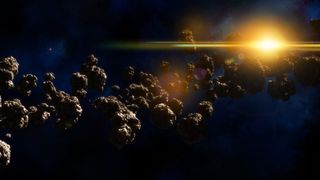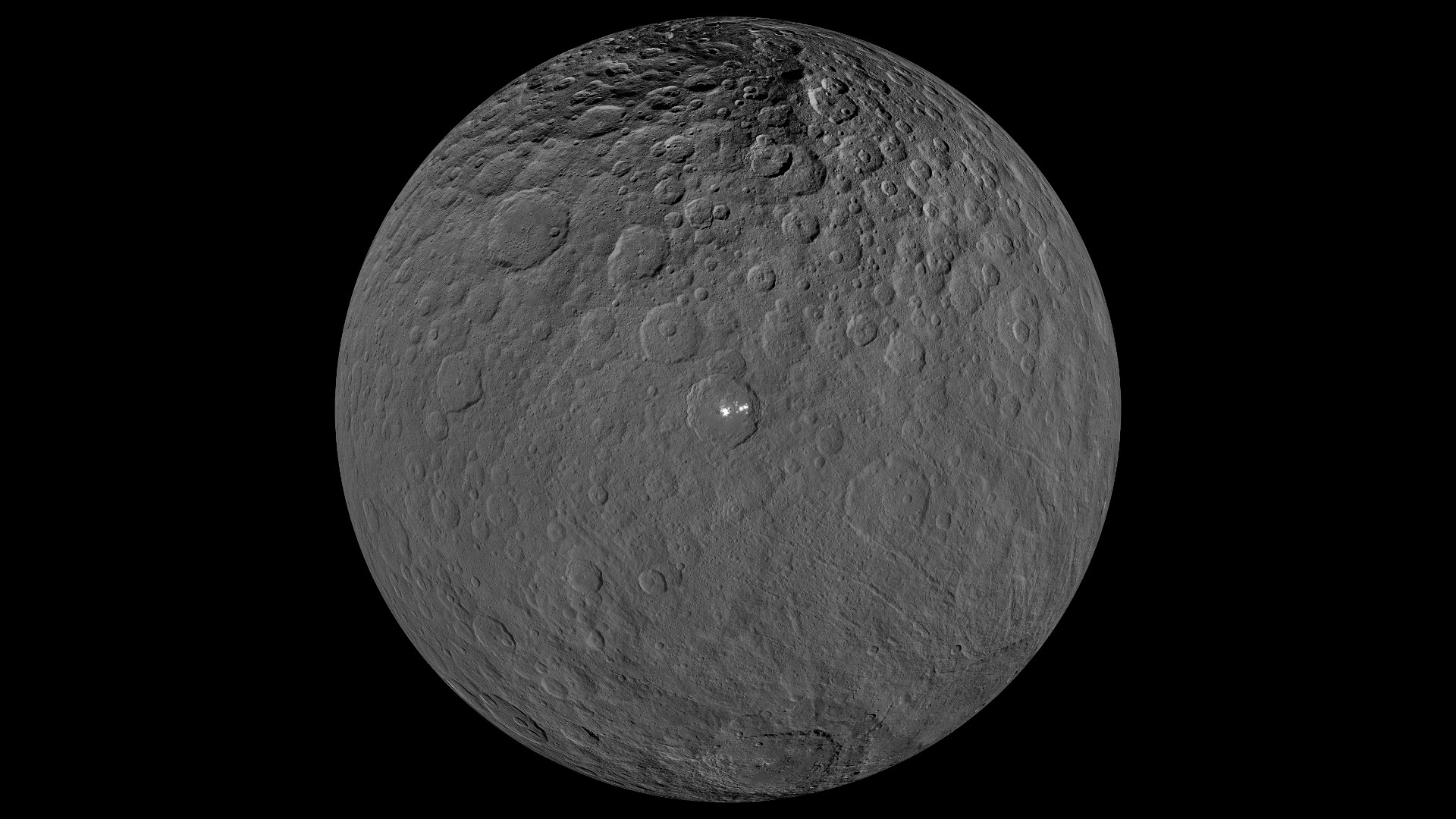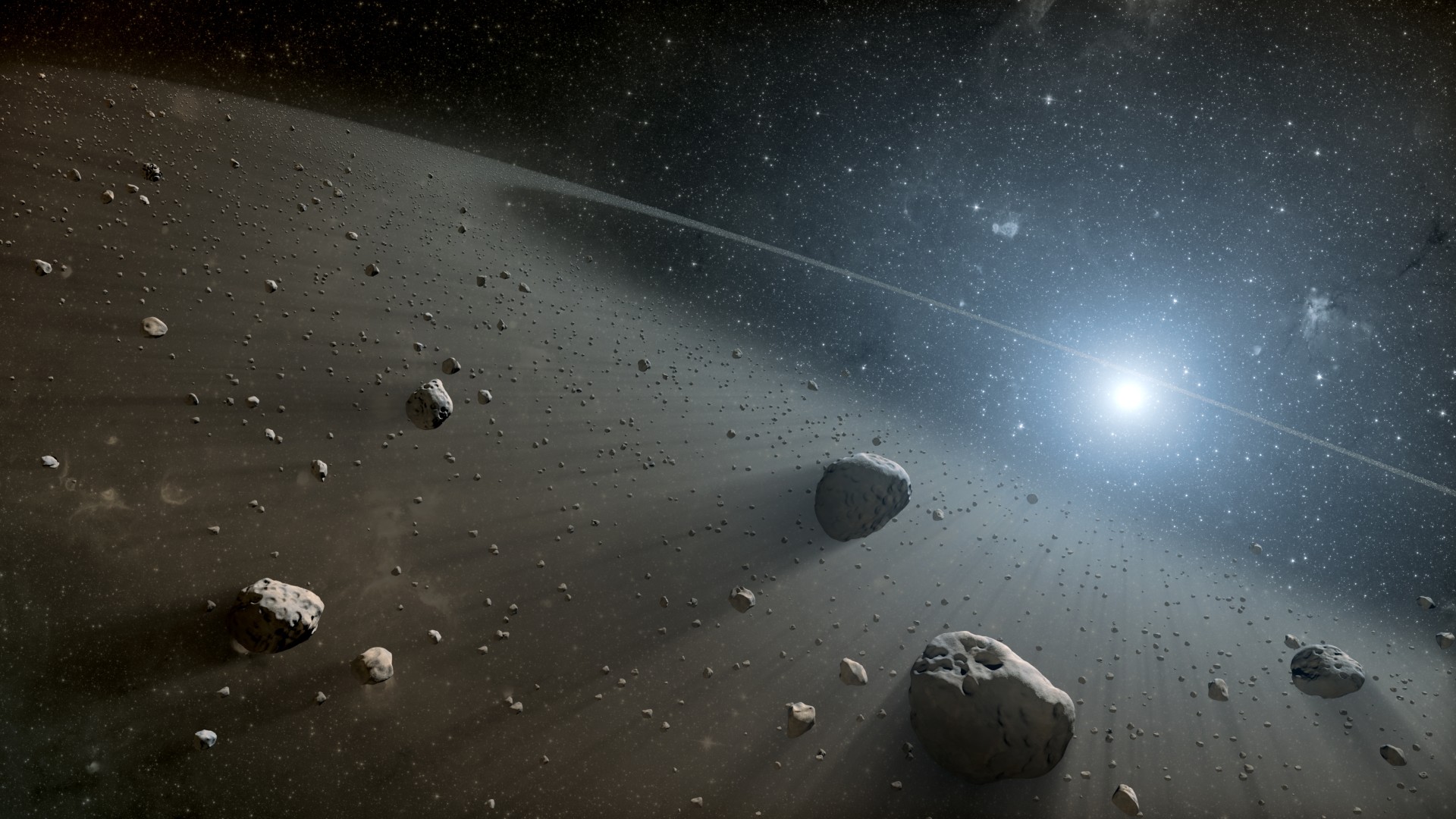Not all asteroids are planet-killers — most are tiny and others are huge. So what are the largest and smallest asteroids in the solar system?

An asteroid field in deep space. (Image credit: Maciej Frolow via Getty Images)
Asteroids constantly zoom around our solar system and sometimes smash into planets, including Earth. As such, in the name of planetary defense NASA conducted a test, dubbed DART (Double Asteroid Redirection Test), to deflect a space rock like the one that wiped out the dinosaurs (or the one Bruce Willis blew up at the end of the movie Armageddon).
Not all asteroids are planet killers, however. While some are monster-size, others are quite tiny. So, what are the largest and smallest asteroids on record in the solar system?
In short, the largest asteroid in the solar system is Ceres, which at nearly 590 miles (950 kilometers) across is about one-quarter the size of the moon. The smallest asteroid is more difficult to pin down; the smallest asteroid officially recognized by NASA(opens in new tab), known as asteroid 2015 TC25, is 6 feet (2 meters) across. Some definitions purport that asteroids must be at least 3 feet (1 m) across(opens in new tab), but not all scientists agree about this size limitation.
The term “asteroid” was probably coined by German astronomer William Herschel(opens in new tab) in 1802. But it turns out, this word — which means “star-like” in Greek — is a misnomer. Rather than incandescent balls of plasma, asteroids are small, rocky bodies carrying dust, ice and sometimes metal. “They’re clearly nothing to do with stars,” Simone Marchi(opens in new tab), an astronomer at the Southwest Research Institute in Boulder, Colorado, told Live Science. “So it’s kind of a vague term and definition to start with.”
Asteroids are thought to have formed in the early days of the solar system, when the sun was surrounded by a thick cloud of dust. As this dust cooled over tens of millions of years, it began to coalesce into larger and larger clumps, which in turn gained mass as they collided and stuck together. Eventually, a few of these bodies gained enough mass to become planets. But a smattering of leftovers remained “like crumbs on a table,” Marchi said. Some of these “crumbs” became asteroids.

An orthographic projection by NASA’s Dawn spacecraft, which shows the dwarf planet Ceres. It focuses on the brightest area on Ceres, the Occator Crater. (Image credit: NASA/JPL-Caltech/UCLA/MPS/DLR/IDA)
Today, most asteroids in the solar system are found in the asteroid belt, a 140 million-mile-wide (225 million km) halo of rocks and dust orbiting in the space between Mars and Jupiter. Scientists have recorded nearly a million of these objects so far. And millions more probably exist, depending on how they are counted.
As the largest known asteroid, Ceres is easy to spot with a telescope. In 1801, it became the first known object in the asteroid belt, NASA reported(opens in new tab). In 2006, the giant space rock — which is more spherical than other asteroids and has a thin atmosphere — was categorized as a dwarf planet, the same designation given to Pluto. (But Pluto, at 1,473 miles (2,370 km) in diameter(opens in new tab), is larger and 14 times more massive than Ceres, according to NASA.) Based on its size and structure, scientists believe that Ceres could tell us a lot about how planets form(opens in new tab). If you disqualify Ceres based on its dwarf planet status, then the largest asteroid is Vesta, at 326 miles (525 km) across.
Meanwhile, the smallest asteroid is a matter of some debate. “There’s not an official cutoff,” said Yan Fernandez(opens in new tab), an astronomer at the University of Central Florida, “so different people have different ideas about what counts as an asteroid.”
Telescopes have spotted asteroids as small as 3 feet across, and there are tons of smaller objects orbiting in the asteroid belt. However, objects this small typically burn up if they enter the relatively thick atmosphere of a planet like Earth, according to NASA(opens in new tab). By this metric, they can be categorized as meteoroids, small bits of space debris that become meteors as they streak across the sky (and meteorites if they make it to the planet’s surface).

In 2022, the Gaia satellite found a lot more asteroids in the solar system. (Image credit: NASA/JPL-Caltech)
To make matters more confusing, asteroids don’t always stay the same size. “Turns out, there are several ways for asteroids to lose stuff,” Fernandez told Live Science. Some crack from thermal stress as they pass close to the sun. Others collide with one another, breaking off chunks of rock in the process. Still others begin to rotate on their axis, gradually spinning so fast that they fling some of their dust out into the void.
Sometimes pieces of larger asteroids qualify as asteroids in their own right, but other times they’re downgraded to meteoroids or simply space dust. So how do experts draw the line between an asteroid and a meteoroid? To Marchi, if a rocky object is in space, it counts as an asteroid — it only becomes a meteoroid when it enters a planet’s atmosphere.
Fernandez sees it as a matter of observation. “If you can discover it with a telescope…watch it orbit and whatnot, I would count that as another asteroid in the asteroid pile,” he said. “But that’s just my opinion, right?”








